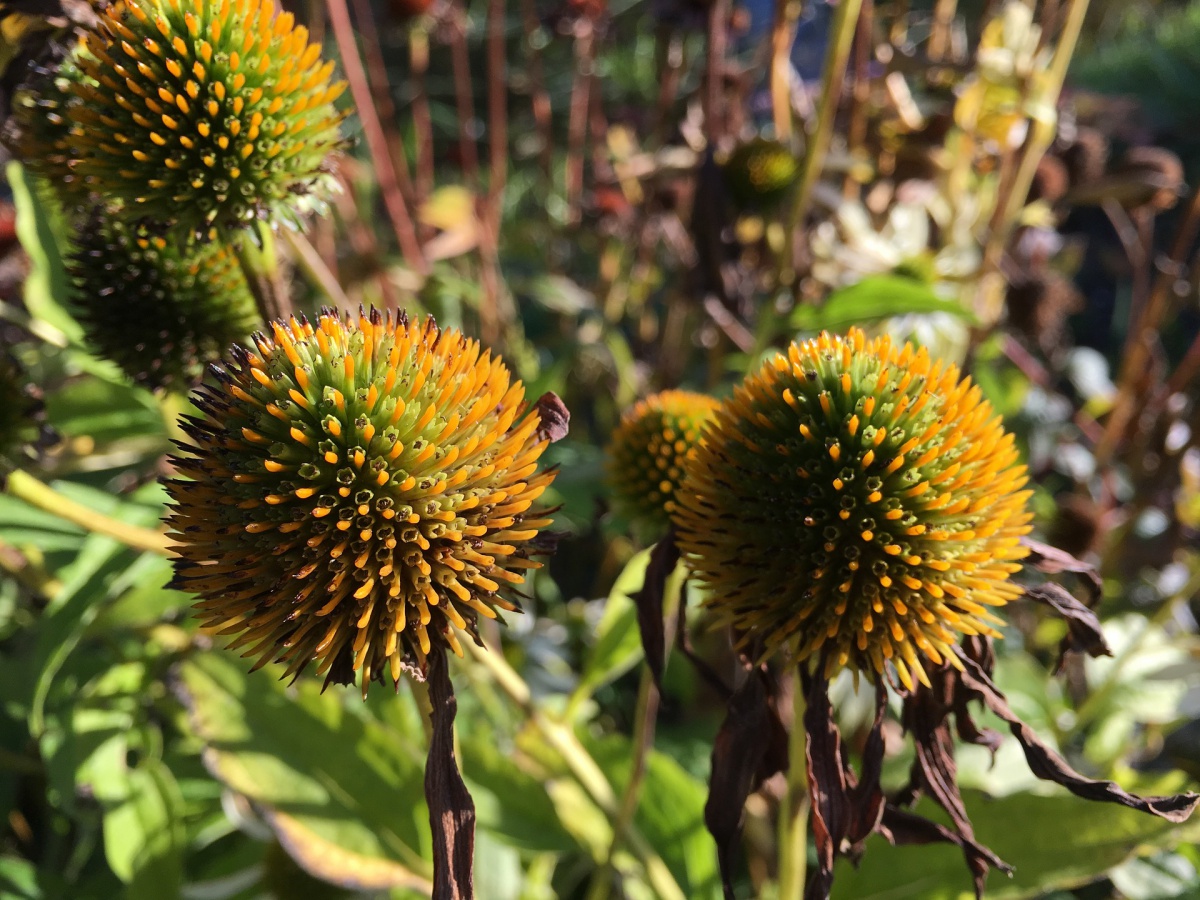by Bruce Bennett • With this year’s unusual weather, I’ve been asked a lot about tasks for the end of our most recent gardening season. My short answer to most inquiries for the last two months has been, “Yes, gardening for this season is nearly over AND there are still several tasks which can be completed now in order to make your initial spring gardening efforts easier to manage.
First, do a clean-up of garden debris. This is especially true for the vegetable garden. The remnants of herbaceous plants, leaves, stalks, etc., should be removed and added to the compost pile. If the plant was diseased or infested, put it in the yard waste container for removal. Our home compost piles simply do not generate enough of their own heat to destroy all overwintering insects and pathogens. After cleaning the beds, spread some (1”–3”) of compost on the area and let it fuel next spring’s growth. Time permitting, digging-in this amendment will also aid in loosening the soil for next planting cycle.
In the perennial beds, leave the stems of flowers in the garden as well as some leaf litter on the ground. The stems and leaves provide habitat for overwintering beneficial insects, amphibians and reptiles. Again, if there were issues with disease, this plant debris should be thrown away. Also, remember to leave the seedheads of grasses and perennials for your winter bird population (think echinacea and berry-bearing plants). Sanitation is always the best and least costly way to reduce next year’s disease and insect problems. Chemicals are not required — really!
Remember to take advantage of end-of-season sales that may still be going on in favorite garden centers. The seeds may have a slightly lower germination rate next spring, but will still grow quite nicely. Bulbs can still be planted in our Zone 8 climate. Inspect them for firmness before planting. Do not allow them to touch when you place them in the ground or pot. Crocus, alliums, tulips and hyacinths are especially easy to survive a late fall planting.
Late-planted shrubs and trees can still be planted and actually do better than if planted in spring. Roots have a longer bit of time to develop before stressful weather affects them. Remember not to install the plant any deeper in the ground than it was in its growing container. If planting an individual specimen, backfill with the native soil that you took out of the hole. However, if you are planting an entire bed with multiple plants, adding a couple of inches of topdressing compost to the bed and working it in as plants are installed is an easy initial slow-release fertilizer process. Keep these newly planted perennials, shrubs and trees well-watered until the winter rains take over the skies. Often, the death of an autumn-planted shrub or tree is due to our lack of watering, not problems with the plant itself. A general rule of thumb is that the plant needs one inch of water per week, either through rainfall or garden hose.
If you have a garden pond that contains fish and water plants, covering the area with netting may be a good task autumn. A few PVC pipes and a bit of netting will keep leaves out of the water as well as keeping blue herons and raccoons from a tasty smorgasbord. Once the pond lilies and other plant cover are gone, there is little to protect the fish. You might think about adding a tarp over a small portion of the pond for more fish protection.
Hopefully, all your tender plants have been brought in. If not, elephant ears, cannas, callas, etc. should be dug up and stored in a cool, dry location for the winter. Tropical plants, like hibiscus, citrus, Norfolk Island pine, and other houseplants should be inside by the mid-October. When bringing them in for the winter, check them for insects. Mealy bugs, aphids and scale like to come in where it’s warm. Particularly check in the leaf axils, stems of the plants and surface of the planting mix. Use an insecticidal soap or an all-seasons oil spray for houseplants before bringing them in. Once they are inside, check them at least monthly.
And, in your down time this November, make notes as to what was successful in the garden and what was a failure. Determine whether the failures were due to weather, bad placement, or just improper care. Question the successes — did the plants do well because of the rain, the sun, or the attention given to those particular plants? This will help in planning for next year’s garden, whether it’s the vegetable garden, perennial garden, containers, or shrubs and trees. Keeping a garden journal becomes a great tool throughout the gardening season in those successes and failures. It is the first reference book used when ordering seeds and choosing plants for next season’s garden.
There are many tasks which can still be accomplished before calling the garden season over. Outside chores abound, from planting, edging, cutting back and turning compost, to preparing for indoor gardening – growing holiday plants and forcing bulbs. Preparing for the holiday decorations becomes a “top of the list” as we approach the end of the month.
Contributing columnist, Bruce Bennett, is a WSU Master Gardener, garden designer and lecturer. If you have questions concerning this article, your own yard or care to suggest a gardening topic for a future column, contact Bruce at gardenguy4u@gmail.com. Photo courtesy of University of New Hampshire


